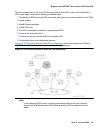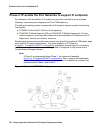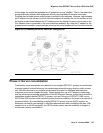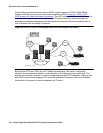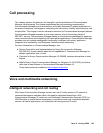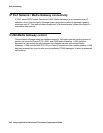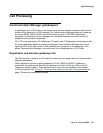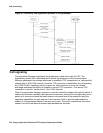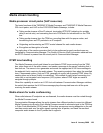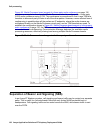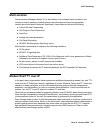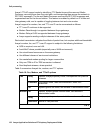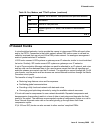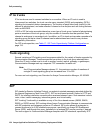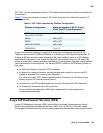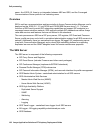
Call Processing
Issue 6 January 2008 129
Media stream handling
Media processor circuit packs (VoIP resources)
The basic functions of the TN2302AP IP Media Processor and TN2602AP IP Media Resource
320 circuit packs, and VoIP on the G700/G350 Media Gateways, include:
● Taking media streams off the IP network, terminating RTP/UDP (adjusting for variable
delay in arrival rate), and converting them into PCM audio for transmission on the TDM
bus.
● Taking media streams from the TDM bus, encoding them with the proper codec, and
transmitting them as RTP packets to an IP endpoint.
● Originating and terminating an RTCP control channel for each media stream.
● Encryption and decryption of media
The particulars of the media conversion that is to be performed on each media stream are
controlled by Communication Manager. The Quality of Service (QoS) information obtained from
the RTCP channel is passed from the circuit pack to Communication Manager.
DTMF tone handling
The Media Processor circuit pack listens for and detects DTMF tones coming from the TDM
bus, strips them out of the audio stream, and sends a message to the server indicating that it
has done so. The server in turn generates and sends the appropriate H.245 tone message to
the endpoint that is receiving the audio stream. The receiving endpoint then plays the specified
tone. Compressed codecs, such as G.729, generally do a poor job of passing DTMF tones. By
sending tones out of band, fidelity is maintained. This method is useful when connecting to a
voice mail or an integrated voice response (IVR) system, where DTMF digits are used to
navigate through prompts.
When this capability is used on an H.323 tie trunk between Communication Manager switches,
the switch that receives the H.245 tone message plays the required tone onto all the ports
receiving the audio stream.
Media stream for audio conferencing
When calls between IP endpoints are conferenced, the media streams must be routed through
the Media Processor board
Communication Manager allows the audio streams from different parties to come into different
Media Processor circuit packs. Each Media Processor sends its received signal to the TDM bus
in Pulse Code Modulation (PCM) format. All the other processors serving endpoints on the call
can then receive and sum the audio signals coming from all parties, and send the resultant
composite audio stream to the IP parties that it supports.



